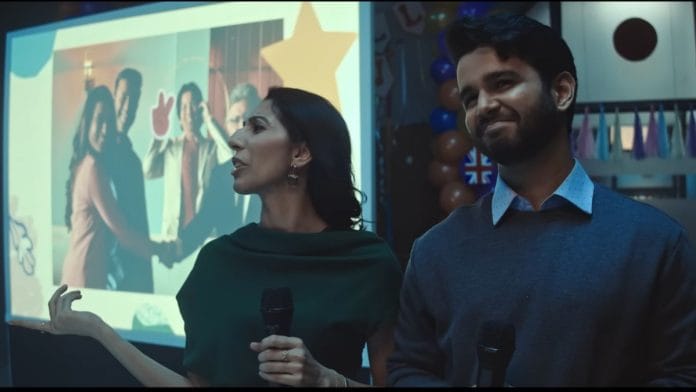In the age of Instagram Reels and YouTube shorts, where capturing attention for more than a few seconds feels like an achievement, Canva has launched a six-minute-long commercial titled ‘Dil Se, Design Tak’ — their first-ever marketing campaign in the country.
In just a month, the video garnered over 10 million views on YouTube, along with a sea of comments praising everything from the storyline and execution to the spot-on acting.
The USP of the Canva commercial is not the product itself—it’s the emotional connection. We’ve all had friends or colleagues who’ve moved away for work, whether to another state or a different country. This ad taps into that universal feeling, making the audience laugh, cry, and relive those cherished moments before the final farewell.
It’s a clever way to make the viewers reminisce about the good old days, all while subtly tying those memories to Canva.
The film, produced by OML Entertainment, tells a heartwarming tale of an office worker preparing to say goodbye to his colleagues. To make his farewell special, his close friends throw a party, creating everything from memes, and slide shows to graphic t-shirts and even a video using Canva—a clever way to showcase the brand’s versatility without unnecessary fluff.
It captures the emotions and memories that resonate with everyone, illustrating the evolving relationship through Canva’s features. The message is clear: ‘dil se, design tak’ (From the heart to design).
Also read: A yellow raincoat in an Amazon package—how the brand ‘delivered the love’ this monsoon
Short films, big emotions
Ever since Indian advertising discovered the magic of long-format storytelling, the audience has been treated to a plethora of heart-warming stories.
“Content is the king, hence, the long-form commercials will continue to rule even in the digital age,” said Lakshman V, Chief Marketing Officer, Ujjivan Small Finance Bank told ThePrint.
He should know. Something similar happened with their 2020 commercial ‘family ki khushi.’ A beautiful script through which Ujjivan Small Finance communicated that they serve the unserved and under-served, building better lives for a financially inclusive India.
According to Lakshman, short films allow the brand to connect emotionally with the consumer, establish a brand image in a simple and lucid way, and deliver a feeling of goodness and deja vu — whenever the viewer comes across the brand.
“To make a short film commercial work – it either needs a strong emotional connect or shock value,” he said.
He further added that if a brand is able to crack the success formula of a four or five-minute-long commercial, it shows that it understands its customers.
Also read: BlueStone’s latest ad campaign celebrates the third wheel in a relationship
2015 — the year of short films
2013 and 2014 became the defining years for short films with Nestle’s Good Food, Good Life and Prison Break commercial by Tata Sky+. But, the dam broke in 2015.
Thirty-second TVCs gave way to longer versions, and we got two to seven-minute-long video stories that helped build brand image.
From health to FMCG, and insurance to e-commerce, numerous brands told their stories as long-format videos, not as advertisements.
To promote its home healthcare products, medical equipment maker Omron rolled out a digital film titled ‘Tumhaari Amma’. The almost seven-minute film conceptualised by Dentsu Marcom, gives a glimpse of the beautiful relationship between a daughter working in the city and her small-town mother, and their role reversal.
Wagh Bakri Tea has built its brand on its strong taste. But, in 2015, the brand took a U-turn and focused on the beauty of relationships with the tea acting as a catalyst. The four-minute film, called ‘Rishton ki Garmahat’ or the ‘warmth in relationships’, was conceptualised by Scarecrow Communications. It featured a husband and wife rekindling their relationship over a cup of tea.
Oyo Rooms also rolled out a six-minute digital film—‘Jai Hind’—in 2015. It features actors Manoj Bajpayee and Raveena Tandon. The video pays tribute to Independent India and the freedom fighters of the country. And, even today, it will leave you with a teary eye.
In the same year, online furniture store Urban Ladder released a just over seven-minute-long film called ‘The Homecoming’, in which the furniture brand plays a key role in bringing two generations of a family together. Starring Piyush Mishra as the father and Taapsee Pannu as the daughter-in-law, the film follows the older generation as they move in with their children.
While the brands sold different products and services and had different values and messaging, there was one thing in common: an emotional connection.
Now, after almost 10 years, brands like Canva are once again tapping into that emotional aspect, which has been pushed aside in the digital age.
Brand: Canva
Agency: OML Entertainment
(Edited by Theres Sudeep)






